The Bow Clock
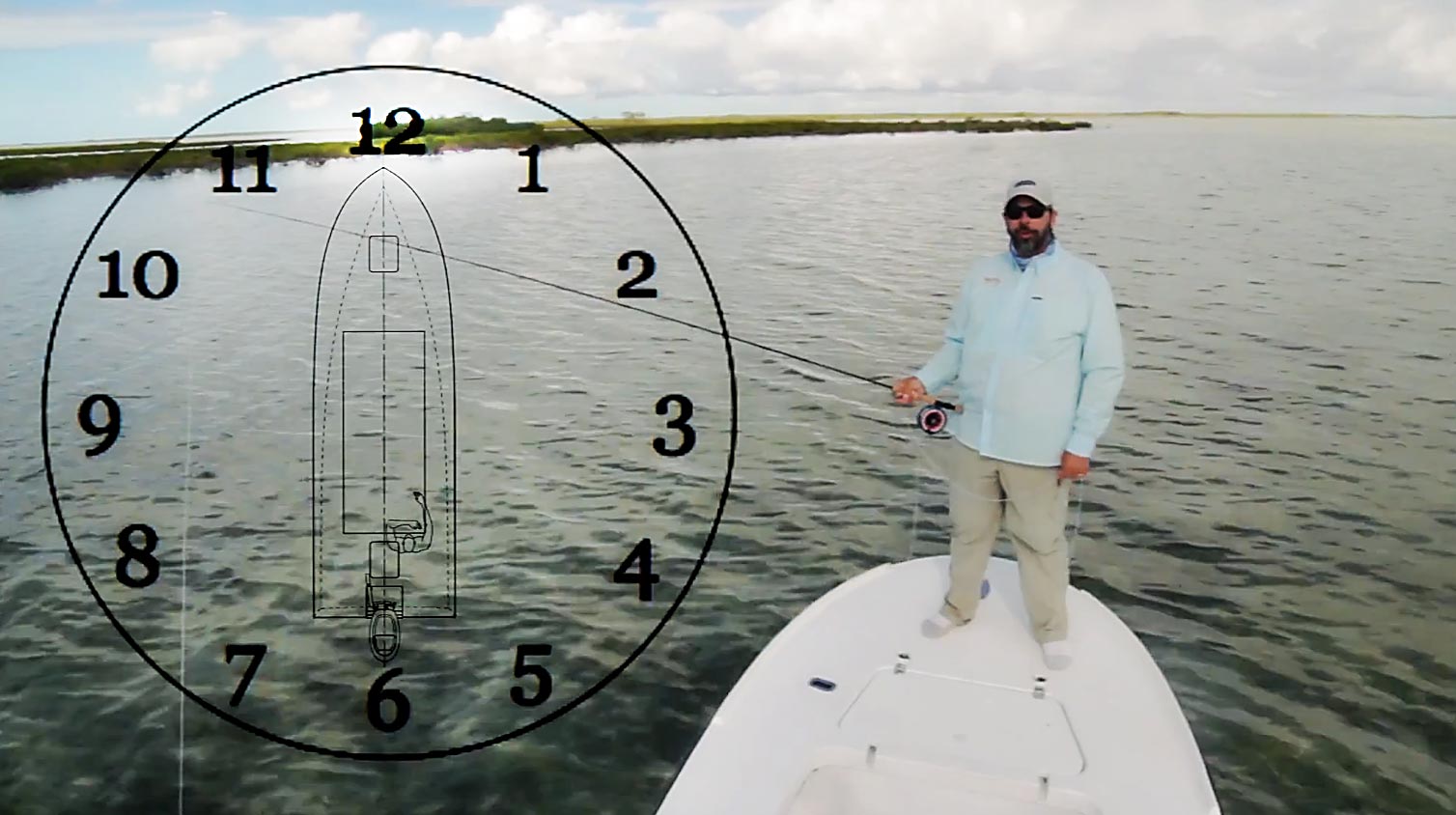
If you can’t communicate with your guide, you’re fishing blind.
Communication is the key to successful saltwater fly fishing. Flats fishing with a guide is a team sport, and like all team sports, The team must work together to win. Your guide has a couple of big advantages, when it comes to spotting fish. He has keen eyes, years of experience and an elevated position on the platform. More times that not, he will see fish long before you do.
Once he has found the fish, it’s his job to help you find them. Your odds of making the right presentation go way up when you can see the fish, so the two of you need to be speaking the same language. Poor communication means missed opportunities.
To help you find fish, your guide will use a system called the Bow Clock. He should give you 3 pieces of information. A Bow Clock time, which tells you in what direction to look. A distance, which tells you how far to look. And the direction the fish is moving– left, right, toward or away. These 3 coordinates should tell you everything you need to know to find the fish and make the shot.
Keep in mind that things look very different from the platform than they do from the bow. What looks like 40 feet to you may look like 30 to your guide. Don’t stare a hole in the water where you think the fish is. Scan the surrounding water for movement and color changes. Point your rod so your guide knows where you’re looking, and can direct you. If he skips one of the 3 pieces of information, ask. “Moving which direction?”
When everyone is on the same page the system works great. Watch this video for more information and to see exactly how it works.
Read More »Fly Fishing Tips for Stocked Trout
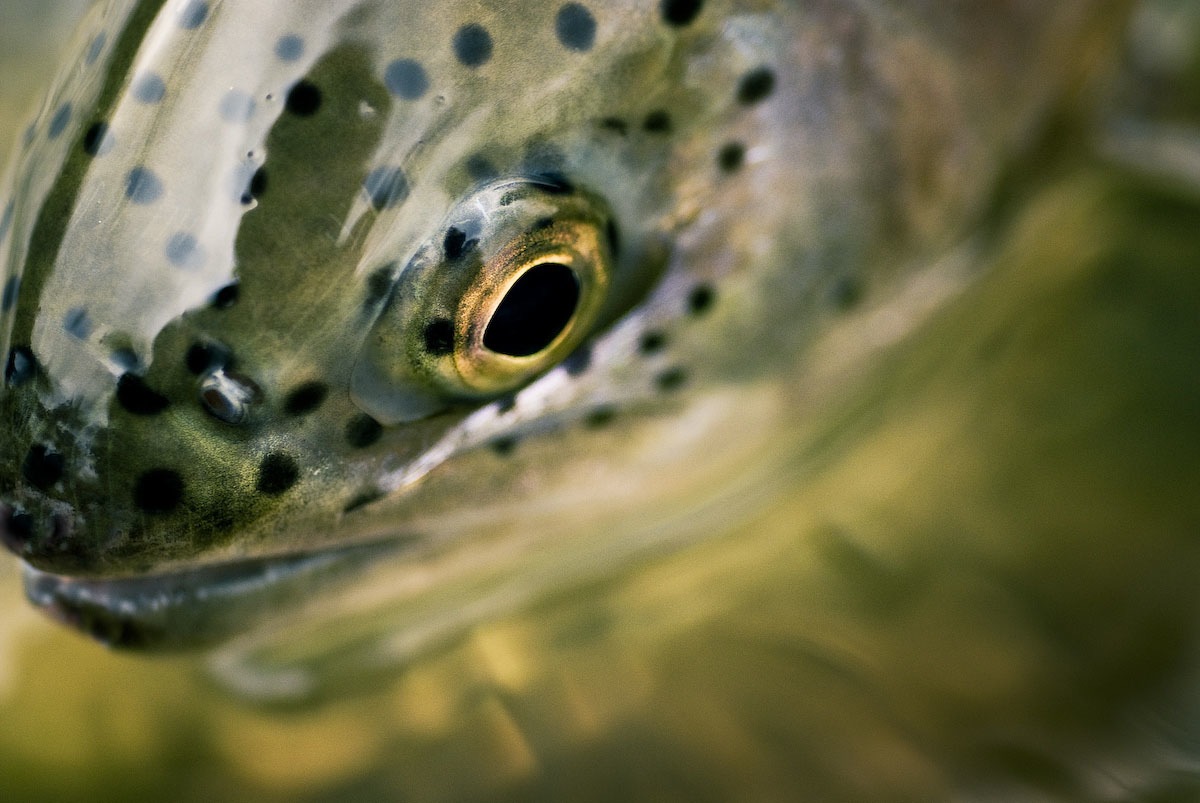
My first memory of bringing a trout to hand with a fly rod took place back in the spring of 1990, on a seasonal trout stream, located 45 minutes north of Atlanta, GA. It was a far cry from a trophy trout at 10-inches, but that freshly stocked rainbow trout, touched my eleven year old fishing soul to the core. I’ll never forget the excitement I felt watching that stocker chase down and eat my olive woolly bugger at my feet. It felt really good for a change, not relying on that plastic blue can of worms to get the job done. From that day forward, I never looked back, and I’ve moved on to become a respectable trout guide in my area and I’ve fly fished for trout all over the world.
Read More »Save Your Night Eyes With The Right Headlamp
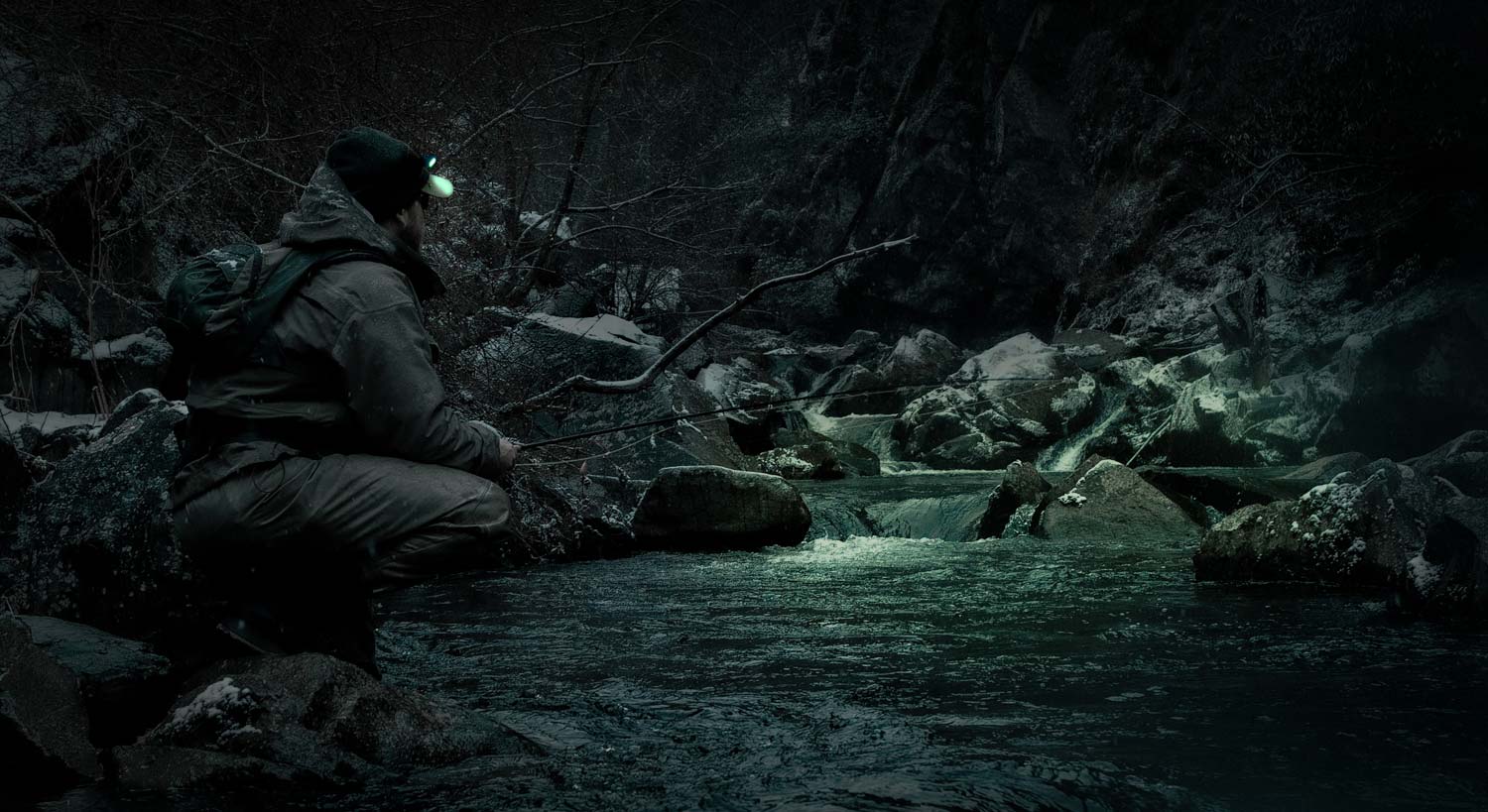
By Justin Pickett
Having the right headlamp makes a world of difference.
Whether you are floating the river at night or find yourself tying knots in the twilight hours of a spinner fall, one piece of gear that you’re likely to have with you is a headlamp. And if you don’t, you should. During the twilight and moonlight hours, a headlamp can be an invaluable tool to make tasks, such as knot tying, navigating, and casting, much easier. Having said that, the most important piece of gear is still your eyes.
Even on the darkest nights, there is usually enough ambient light to find your way around. The human eye is an amazing thing and is designed to react to lighting conditions and optimize your vision. Your eyes are vulnerable, though. At night, just one quick flash of a flashlight or headlamp in the eyes can take you out of the game.
High intensity light (especially white light) bleaches the chemical held inside the rods of our eyes (rhodopsin), which allows us to see at night. Once hit with high intensity light, it can take several minutes for this chemical to regenerate allowing you to see and function, and up to a half hour for your night vision to completely recover.
On the river, losing your vision for only a few seconds can be disastrous, several minutes is not an option. Treading around water after dark can be a risky endeavor. Falling off of a boat or losing your footing and taking a dive into any body of water can certainly put an end to your trip, or worse.
To avoid ruining your night eyes, and crippling your vision when you need it most, make sure to
Read More »Why Are We Out There?
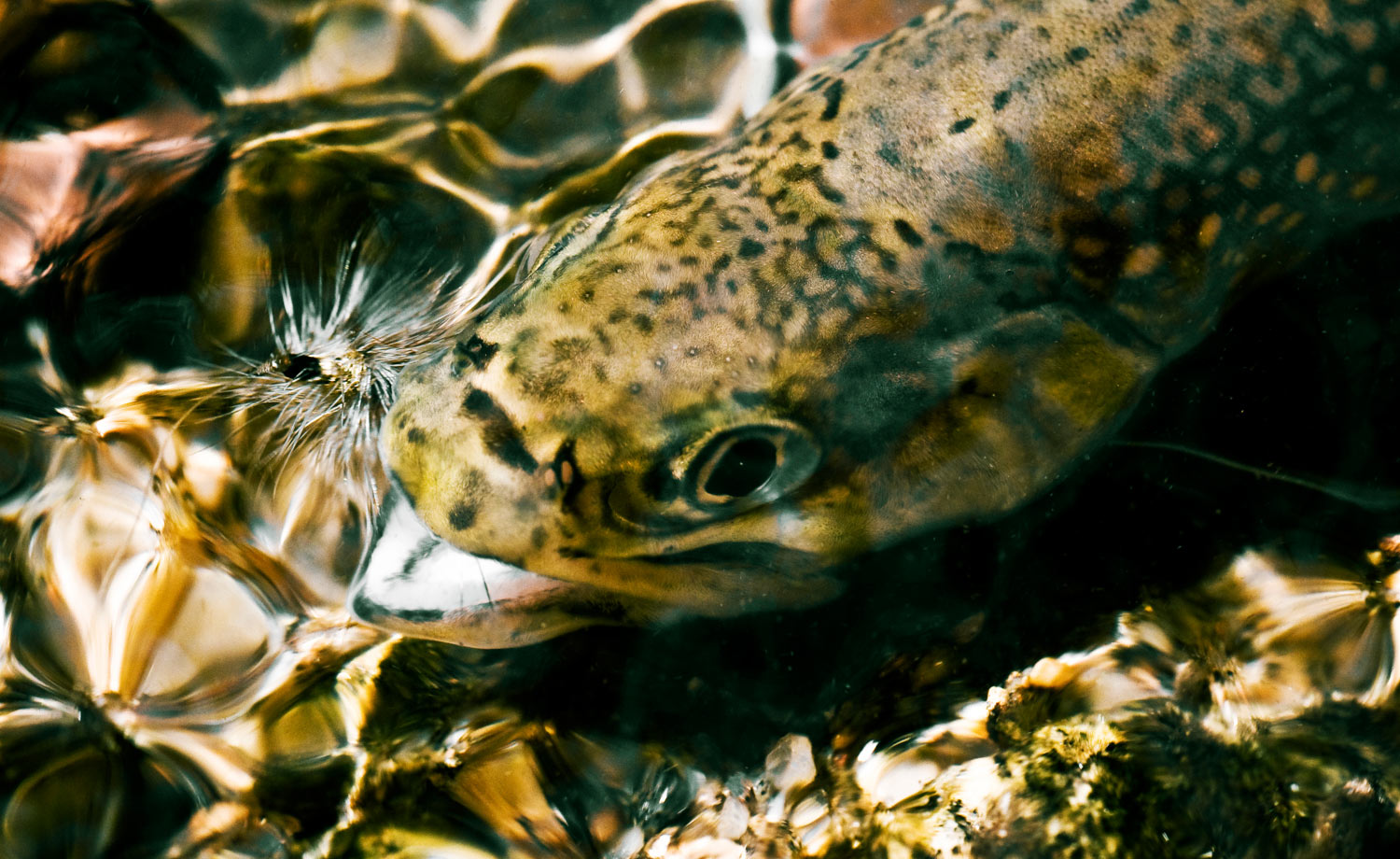
By Kyle Wilkinson
It’s a question as old as this great sport. Why do we fly fish?
Why do we make the sacrifices—whether it be time away from family, perhaps less money in your bank account, the risk of possible injury (I could go on)—just to catch a fish and let it go?
Now, I don’t typically do this sort of thing but I had a guide trip the other day that I haven’t been able to stop thinking about since. And trust me, I’m not trying to sound all preachy or holier-than-thou in the paragraphs to come. Like I said, this day has simply remained on my mind.
I had a 3-person guide trip with a good, repeat customer of mine. Our destination was the Dream Stream section of the South Platte and the group consisted of a father/son duo, and the father’s friend. As seems to be a resounding theme in Denver, the son lives here and his dad/his dad’s friend were in visiting from the Midwest.
We met up early and hit the river. Both dad/son are good anglers, however the dad’s friend had never touched a fly rod. (which happens to be one of my favorite customers to be dealt). I got him up to speed and within the first 5 minutes we were staring at a chunky 18” rainbow wiggling in the net. This was his first fish ever on a fly rod and we were all excited! As the day went on, he brought many more fish to the net, however
Read More »4 Flats Accessories From Simms That I Can’t Live Without.
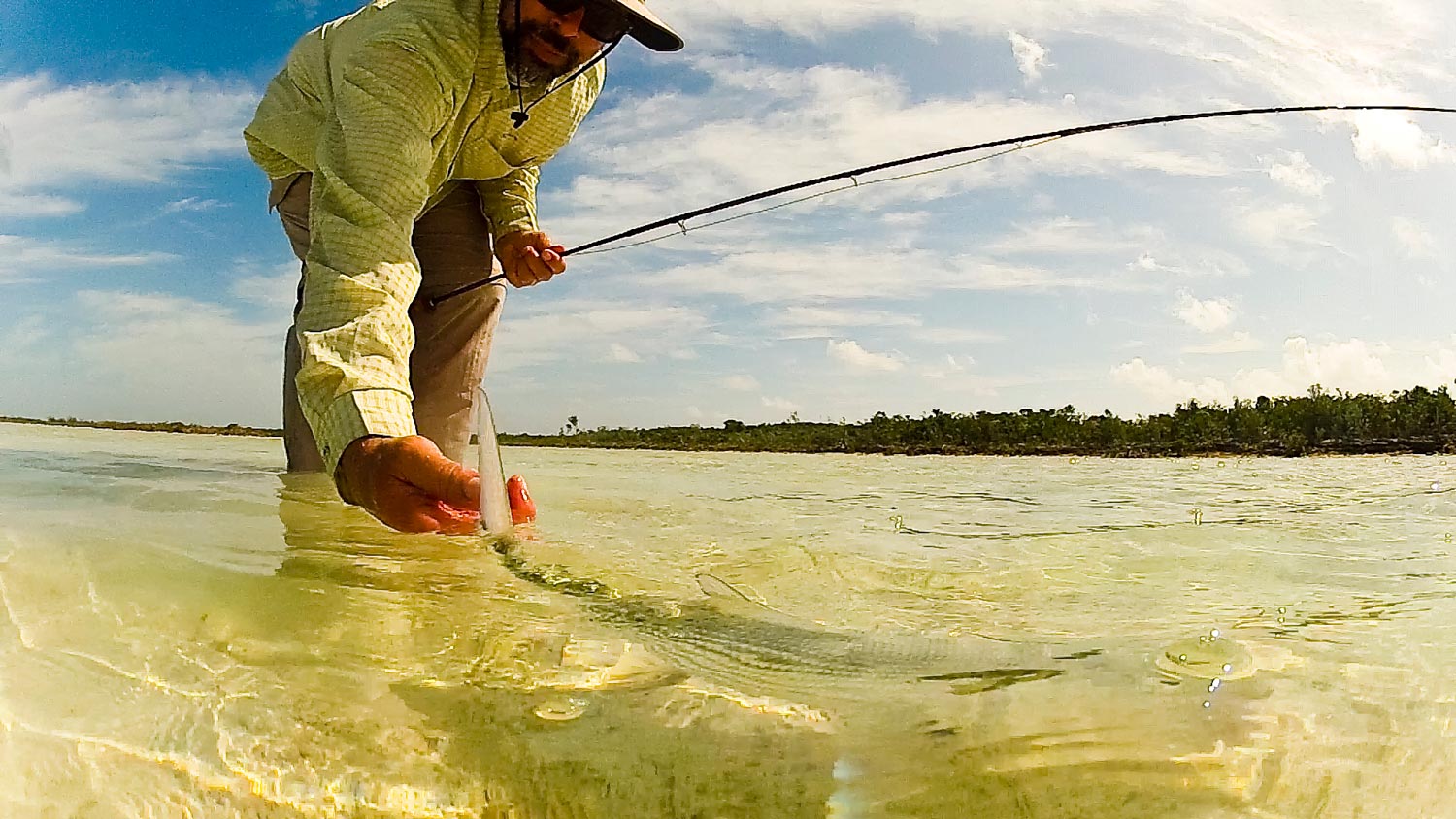
When you set off on a trip to an exotic location for a little flats fishing it’s important to have the gear you need. Islands known for great saltwater fly fishing aren’t usually known for having great fly shops. It’s often a major ordeal just to come up with some sun screen or batteries. It’s smart to take what you need. Being stuck on an island for a week without essential gear really sucks. Here are four pieces of inexpensive flats gear that I love and count on, that all happen to come from Simms. Simms Sunsleeves $29.95 I am dead serious about sun protection. When I am fishing in the tropics keeping safe in the sun is job #1. I was skeptical about the Sunsleeves at first but after a couple of my buddies started wearing them and raving about them I decided to give them a try. They’ve become one of my favorite pieces of gear. With Sunsleeves you get the protection of long sleeves while you enjoy the comfort and range of motion you get from a short sleeve shirt. Plus, you can go without them in the mornings and evenings and put them on when the sun is at its worst. It’s great! And from a dollars and cents point of view it’s cheaper than sleeves. Long sleeve flats shirts cost $10 more than short sleeves, so the Sunsleeves pay for themselves. (GET ‘EM HERE) Simms sun gloves $24.95 Sun gloves are absolutely essential for me. Being able to keep the sun off of my hands when the sun gets high is not a luxury, it’s mandatory. I’ve used several styles of sun gloves and these are my favorites. Cool and well fitted with open palms these gloves have abrasion-resistant pads where you grip the rod and … Continue reading
Read More »A Little Chrome Tail
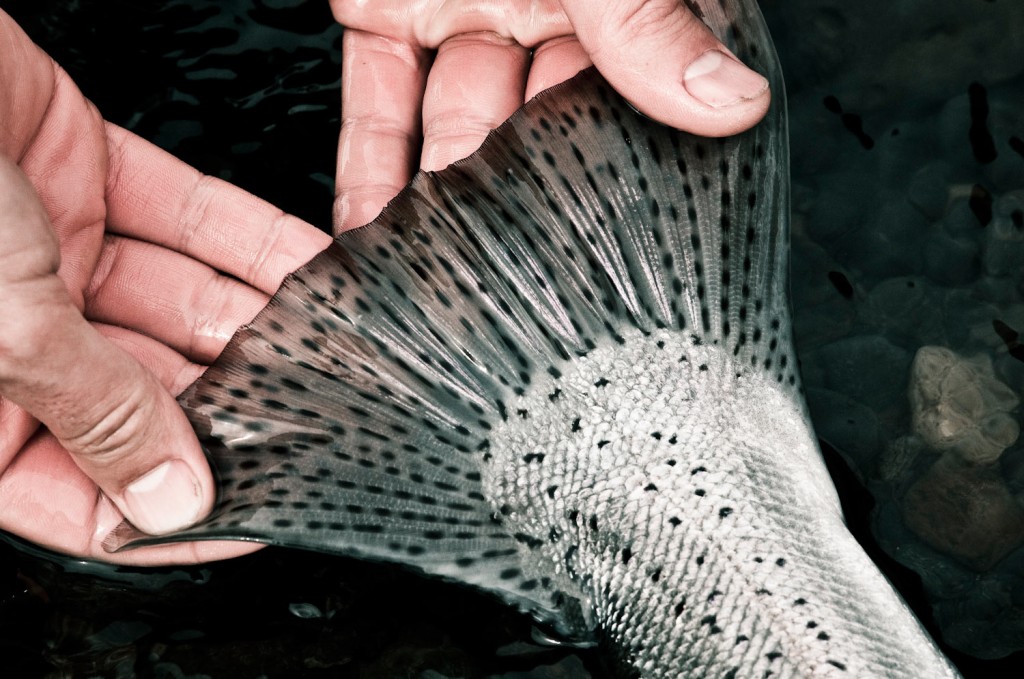
There’s nothing like a little chrome tail to start this day! What a beautiful bright steelhead courtesy of my buddy Jeff Hickman. The bright chrome strips in the tail tell the story. This is a fresh fish, straight from the salt.
Read More »Fixing Line Twist: Video

A day floating the river can turn into frustration when your running line starts to tangle.
There are lots of reasons fly lines get twisted. The most common is being rolled under foot in the bottom of the boat. However it happens, it’s a mess of tangles and knots that make fishing frustrating. There’s nothing worse than landing your fly just short of the strike zone because your running line is tangled.
Fortunately there is a simple trick to fix line twist. I learned this trick from my buddy Zack Dalton of ROI Products and it changed my life. I promise you will love it.
P.S. Watch closely and you’ll see a fish eat my fly behind my back.
WATCH THE VIDEO AND NEVER SUFFER WITH A TWISTED LINE AGAIN.
Read More »Yakima River trout Fishing: Video

Recently I got the chance to float the Yakima River in central Washington.
While attending the launch of the new Sage X rod, the folks at Sage were good enough to host us for a day of fishing on the Yak with guides from Red’s Fly shop. I was fortunate to land on a boat with Jim Mauries of Fly South and Guide Nate Rollie. It was a great day of making loops and fighting fish on a beautiful river.
I took advantage of the opportunity to capture some of Nate’s eleven years of experience with Yakima trout on video. If you are in Washington state the Yakima is a must. The river is full of tough fish and the accommodations at Red’s are amazing.
Watch the video and enjoy “Floating The Yak.”
Read More »The River… Why?
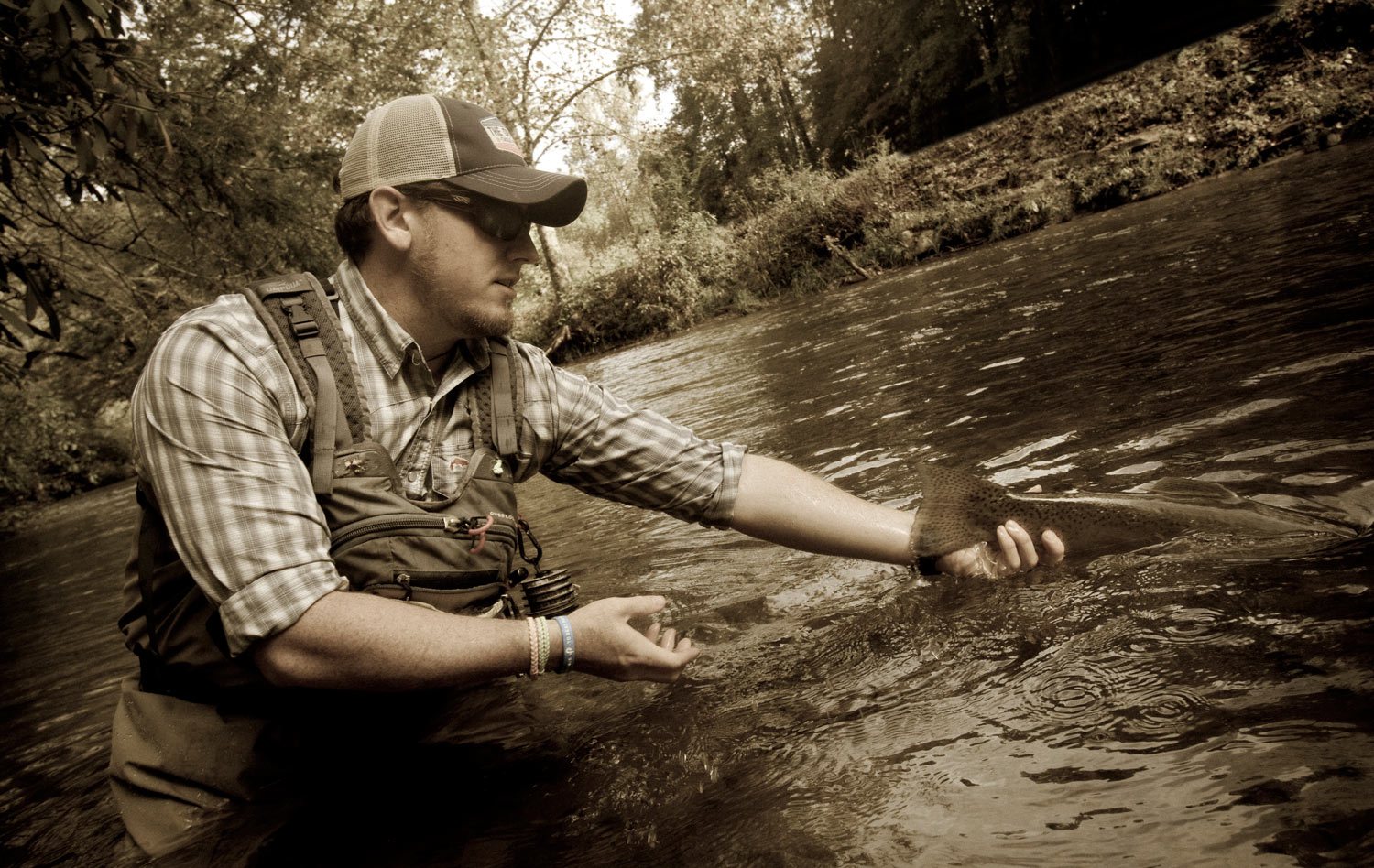
By Justin Pickett
A FAINT FOG ESCAPES ME AS I EXHALE A DEEP BREATH OF MOUNTAIN AIR.
I can hear the tumbling waters of my favorite north Georgia stream just off in the distance. They are surely running super low and crystal clear as expected. My angst is fighting with the need to take my time. I simply cannot wait to drown these flies.
When fishing solo, as I am on this day, I like to put my rod together, place the reel in the reel seat, grab the rest of my gear and head straight for the water. I find my favorite starting point and then I sit on the bank as I tie on my rig. As the sun rises over the mountain, and the fog begins to lift from the water’s surface, I stare into the water, scanning its currents for signs of life. Just a flip of a tail is all I need. I take in a deep breath and exhale, watching my breath as it fogs in the cool mountain air. I feel at peace. There’s nothing here to worry me. I’m safe. I’m not under any time constraints, nor under any pressure. There are no expectations here. It’s just the water and the fish, with the surrounding nature and myself in the background. I am completely at ease in this place.
Yes, fishing and catching fish is fun, and that is surely one of the elements that attracts me to this sport, hobby, passion, past time, or whatever else you prefer to call it. However, to me, it’s more than that.
My wife always likes to ask me, “what do you think about when you’re fishing?” I’m not sure if she thinks
Read More »A Year Fishing The Everglades Special, Half Way Through A Bad Decision
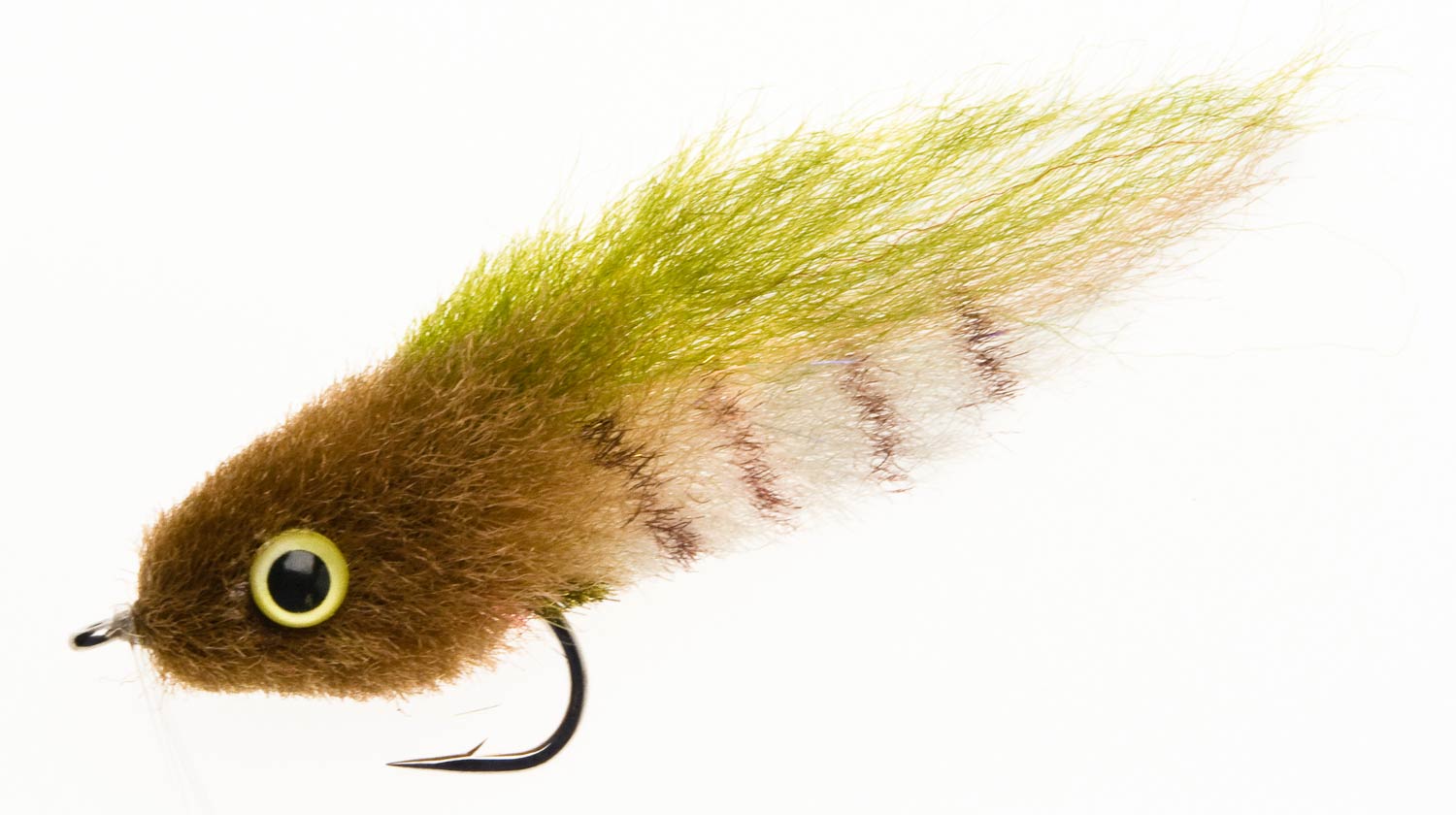
By Paul Pucket
FISHING WISE, I HAVE NEVER HAD A YEAR LIKE THIS ONE.
I am fishing in places I have never fished and feel very lucky to have the opportunities. The main difference between this year, and the prior years spent chasing these mindless, slimy, instinctual creatures, is that I am limited to one fly. All year. The Everglades Special.
I have now reached the halfway mark, and have a few thoughts about this adventure. Working in the Lowcountry Flyshop in Charleston, I have heard a few people discuss the idea that you could use the Everglades Special for any species of fish, especially the redfish that swim in our parts. So I took on the challenge, without really even thinking it through, and here I am, with one flybox containing a single pattern.
My first few would-be angling conquests were big goose-eggs. Winter here in Charleston means slow, lethargic, picky reds. It also means clear water and huge wads of fish. The fishing can be really great.
Winter was cold here. I chose my fishing days wisely. Well, as wisely as I could, not having a boat and depending on friends to get me out. One day in early March, with Harry Tomlinson and Doug Roland, I got my first redfish on the Everglades Special. If felt good, like I’d accomplished something. I’d caught a largemouth bass a few days before, so now I had scored two species. I fished a few more times in February and March. A couple of fish were caught, nothing out of the ordinary, but I had my eyes on the biggest test I would face all year, a permit.
Looking past the permit for a second, down the line I had Florida tarpon, Utah trout, Alaska kings and rainbows, Tennessee carp and Jackson Hole trout. Maybe fall in Montana and definitely fall reds. A lot to accomplish, for me and my Everglades Special. As I read this back to myself, I’m thinking, I have the best year of fishing I may ever experience, all around this continent, and I am stuck with one damn fly! Wow, am I stupid?
So, back to the permit trip to Punta Allen’s Palometa Club. Not just permit, of course. Bones, snapper, and jacks –I’m counting these species too. Stick to the plan, that was the only plan. I had tied some small versions of the Everglades Special for bones and snapper on a size six hook and also had tied a weighted version to get down quick. I figured if I was gonna use this fly for permit, I could find a loophole. Nobody said I couldn’t.
Imagine having to explain to your Mexican/Mayan permit guide that you can only use one fly. They do speak pretty good English. Think about how stupid you must sound, coming all the way here to fish for the hardest fish you can get to eat a fly, and you have a baitfish pattern, with dumbbell weight eyes, meant to mimic a crab but looks like a baitfish. Dumb.
The first day, I had this weighted Everglades Special. in front of a few fish. They never really gave it a second look. After all I had heard about permit fishing, this sounded normal. I never flinched, never thought about defeat. On day two, we saw a little more action, right out of the gate.
Read More »